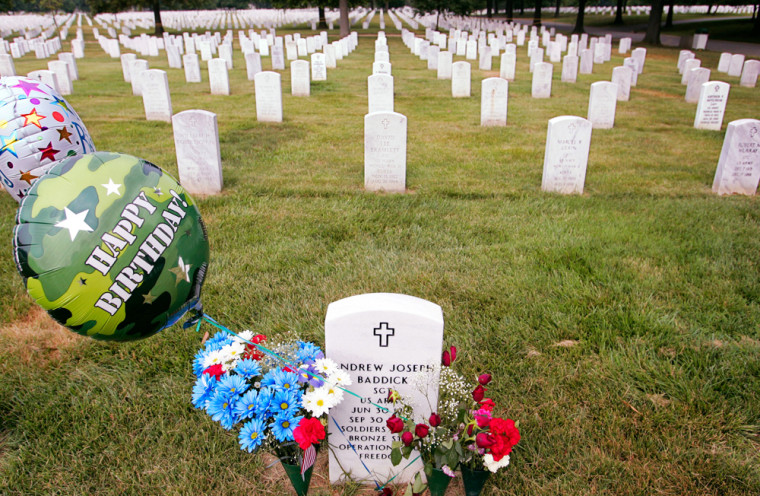The simple white marble stones that mark the graves of the country’s fallen soldiers have changed little over the decades. But the business of producing tens of thousands a year has become a high-tech, high-pressure proposition.
That’s because the government requires its three official makers of military headstones to finish and ship them within 10 days of their being ordered.
“It’s a pretty serious challenge,” says Jeff Martell, whose factory employs computers, automation and diamond-edged power saws to keep up with the government’s demand for cemeteries in the Northeast, Mid-Atlantic and Midwest.
Martell’s Granite Industries of Vermont Inc., nestled in Barre, has been producing stones for military cemeteries for nearly two decades. It averages about 22,000 markers a year.
Nowadays, orders come from the Department of Veterans Affairs electronically. Designs are laid out by a computer that fashions mock-ups of headstones and prints them as stencils on adhesive-backed rubber sheets.
A 10-foot, diamond-edged saw slices through 35-ton blocks of Danby marble - named for the town south of Barre where the stone is quarried — cutting them into four-inch thick slabs. Smaller saws trim the slabs to regulation headstone size: 42 inches high, 13 inches wide.
Another machine rounds the top of each stone.
Rubber stencils
Workers affix the rubber stencil to the headstone, which rolls along a conveyor to the sandblasting booth. Letters are etched by a worker who sweeps the sandblasting nozzle back and forth across the marble before spray paints the surface black to enhance readability. The stone is then polished before being boxed for shipping.
About half a dozen of the plant’s 56 workers play roles in fashioning each stone. Together, they can produce 10 in an hour. The VA pays $120 per headstone. In all, the government pays Granite Industries about $3.3 million a year to produce military grave markers.
Business is steady, with more than 1,000 World War II veterans dying each day along with the constant trickle of casualties from Iraq and Afghanistan.
There are also plenty of orders to replace markers that have worn with time — as far back as the Civil War.
Last year, Martell witnessed a first: His company replaced headstones for 29 members of a German U-boat crew killed during World War II off the Atlantic coast and buried in Hampton, Va.
“When you see them in German,” he said of the names and ranks of the seamen etched on the markers, “they kind of pop up and make an impression.”
